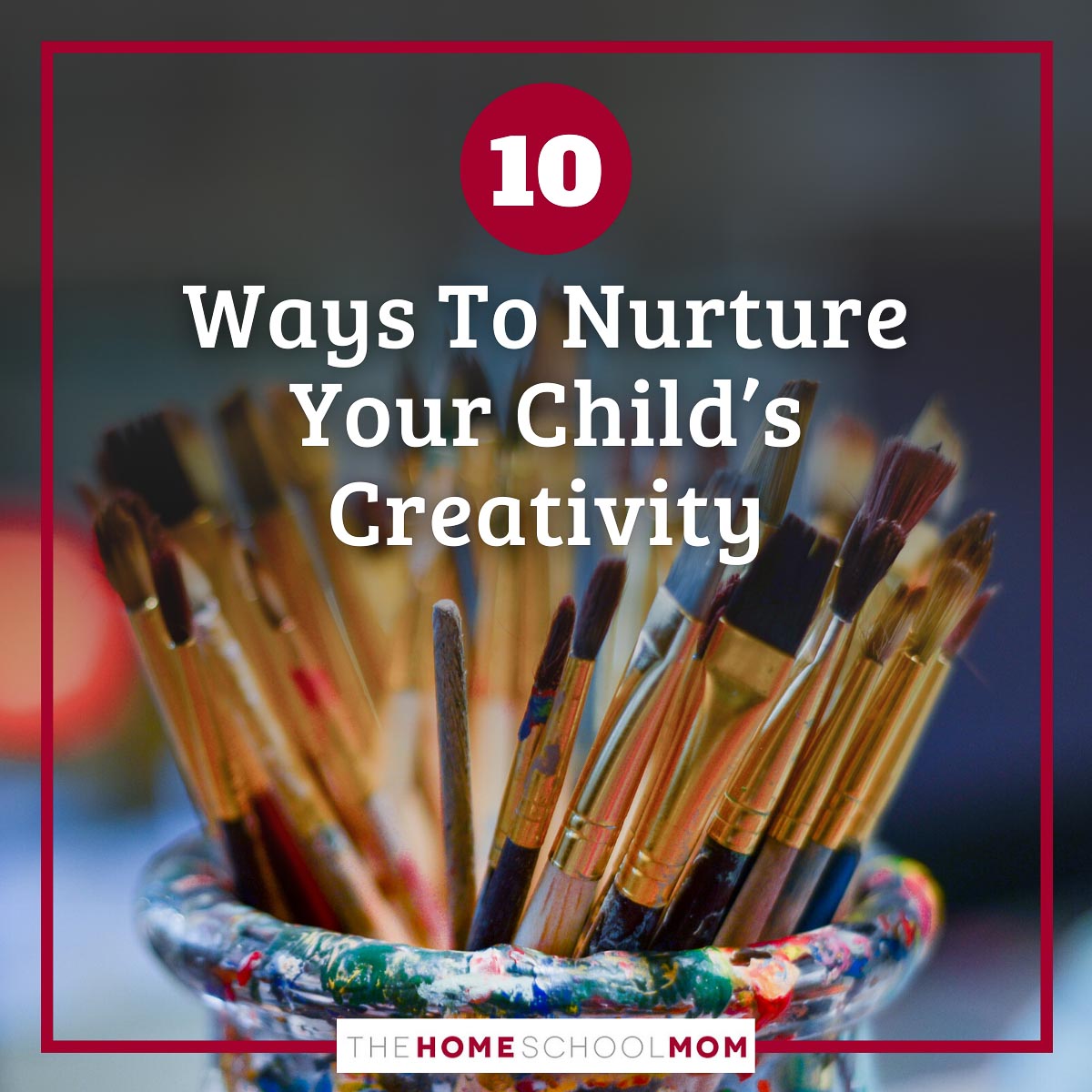This post is contributed by Oak Meadow, the sponsor of our Living Education series.
We all want to nurture our children to develop their creative potential and find opportunities for artistic expression (especially as homeschooling parents), but sometimes we may worry about what our role should be in that process.
Often, the most helpful thing to do is to offer a starting point with many possible outcomes. This will allow your child to explore and discover creative solutions you may not have even dreamed of!

Here are ten starting points for nurturing your child’s creativity:
- Let your children get bored. Do not rescue them from their boredom by giving them something to do; instead, let them rescue themselves. This is one of the best opportunities for a child to be creative! Know that this means that your child has an opportunity to discover something about what and who they are, what they like to do and can do, and how to manifest ideas into reality.
- Get outside! Go for a walk or just sit outside and observe. Sometimes the best creative play opportunities arise when there is nothing around but nature. Changing the environment can give us a new perspective on ourselves and all sorts of other things.
- Invite your child to tell a story, compose a poem, make up a song, create a play, or invent a dance. Give them your attention when they are ready for an audience. If they ask you for a topic, invite them to come up with one on their own. Make it a family tradition to tell stories, sing songs together, and entertain with funny, made-up jokes.
- Consider that freedom follows form. Help your children learn established techniques which they can later experiment with. Help them gain confidence with craft tools and methods. If we give a child some structure, but not too much, it opens more doors for creative expression.
- Keep appropriate supplies handy. Got crayons? Cardboard? Paper? Tape? Clay? Paint? String? Scissors? Creating experiential learning stations can open to door to creativity and exploration. With safety and age-appropriateness in mind, you can make it easy for children to access materials when the creative urge strikes.
- Provide natural and recycled materials on an ongoing basis. The more varied, the better. A jumble of odds and ends can spark a series of creative ideas. What can you make? What can you build? What does this remind you of? What could someone do with this? The stories our children tell and even their most impossible ideas can be as important to their creative development as the things they actually make.
- Lead by example. Start a creative project yourself, and let your children observe and join in. Make a card, decorate something, or create art just for the joy of it. Do you have creative hobbies that you can share with your children? Leading by example is one of the best ways to encourage our children to be courageously creative people.
- Allow things to get messy, disorganized, and cluttered. Creativity can be messy. Don’t allow your need for cleanliness to take over your life! Many of us parents develop a feeling that it’s our job to keep things clean and ‘fight the mess’ continually. You could inadvertently be sending a message that kids are being inconvenient to you by playing or creating art. But at the same time…
- …and set the stage for clean-up success. Keep a plastic tablecloth, aprons or smocks, and old newspapers in a handy place, and help your children learn to prep and protect the area where they are working. Keep a trash can, a recycling bin, and some rags or paper towels in the area where arts and crafts most often take place. If extra-messy projects make you nervous, consider setting them up outside. It’s okay to encourage a balance between expanding creativity and keeping the cleanup job manageable.
- Offer possibilities and let things happen organically. Once your child’s creative juices are flowing, step out of the way. Be quietly available for support if it’s needed, but let them do the rest. If the end result is nothing like you thought it would be, congratulations! You did a great job encouraging your child to own their creative process and allow it to be separate from your own.
What are some other ways to foster creativity in yourself and your children?




 Enjoy these posts from the pages of Living Education, the seasonal journal from our contributing sponsor,
Enjoy these posts from the pages of Living Education, the seasonal journal from our contributing sponsor, 


Leave a Reply